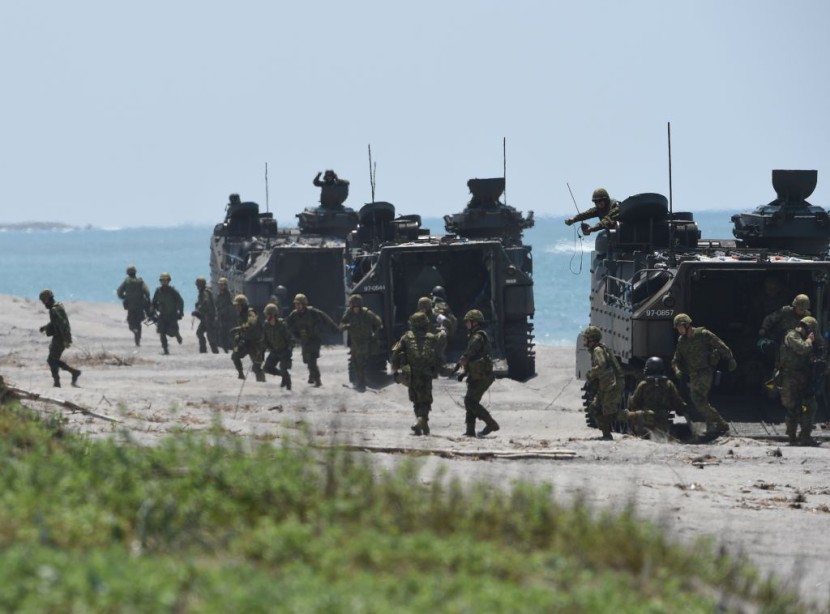
The five essential weapons of war needed in the event of a dispute in the Korean Peninsula, which can be used by Korean and US forces, are crucial to fight Kim Jong Un's troops in a heated land battle. In the end, it will come down to an old-fashioned land battle that is more dangerous than Pyongyang's arsenal.
First, it will be a marine landing by the U.S. Marine Corps (USMC) that will be the first in so many years. Military experts have cited these five combat systems that are not necessarily high tech by covering the need for transport and artillery support.
The Amphibious Assault Vehicle
These Amphibious Assault Vehicles or AAVs are the workhorses of the invasion, first used in 1970. They can load about twenty-one marines and their complete kit. Many of the vehicles will be carried by Wasp-class assault ships that specialize in amphibious operations, reported the Nationalist Interest.
Carrying the marines from the sea to the land and float like a boat as a standard kit for waterborne ops. Relatively slow in the water but fast enough on land, with 40 mm grenade launchers or standard 50-cal machine gun. Lightly armored but are not as secure as tanks from caliber bigger than 14.5 mm.
Tilt-rotor craft
Seal, land, and air the USMC will have everything in their kit, like the MV-22 Osprey tilt-rotor, which carries marines to the landing zone from a guard beachhead. They are used to insert troops where aerial superiority has been achieved, cited Air Force Technology.
Able to take off vertically and fly like a plane with two rotatable nacelle rotors, which is only used by the US. It can move 24-fully kitted marines over any obstacle. Capable of transporting supplies and equipment to the front as an air taxi, as one of the five essential weapons of war of Marines.
It flies at a top speed of 277 miles an hour, its max speed is faster than most helicopters, and an operational radius of 500 miles. It can extend the range with midair refueling too. It will keep the enemy guessing.
CH-53E Super Stallion
The Osprey is somewhat limited in the weight it can load, but the CH-53E Super Stallion is the answer to maximize the equipment carried per load. It will be moving most of the equipment for a forward base so that the Osprey can bring in the rest.
It is the biggest and most powerful helicopter in use with the US military that can carry up to sixteen-ton load, fifty-five marines, or any combination. Able to fly 500 miles, but less with a heavier tube and has a probe for refueling.
Light Armored Vehicle-25
Light Armored Vehicle or LAV-25 has eight wheels and with 25mm M242 Bushmaster cannon equipped for scouting missions and used for land campaigns that need a light carrier for fast marine maneuvers. It can fit an LCAC hovercraft and move with water jets, carried by the CH-53.
They are configurable for any missions that marines embark on.
Guided Multiple Launch System
The High Mobility Armored Rocket System (HIMARS) is a 227mm rocket system mounted on tracks. They fire six rockets of one jumbo-sized ATACMS rocket at once, noted the Defense Post.
A Gimler, or Guided Multiple Launch System, allows the missiles to hit a target accurately and loadable on an amphibious flight deck as artillery support. The weapon can be carried on Landing Craft Air Cushion hovercraft.
The five essential weapons of war will be a tool kit of the U.S. Marine Corps based on amphibious ships to enable marine landings on North Korean beaches.
Related Article: Naval Air's V-22 Osprey Tilt-Rotor Aircraft Is Like An Airplane and Helicopter in One
© 2025 HNGN, All rights reserved. Do not reproduce without permission.








